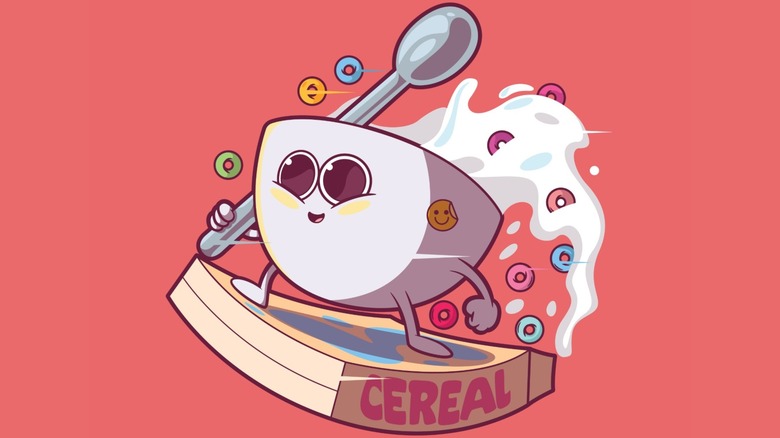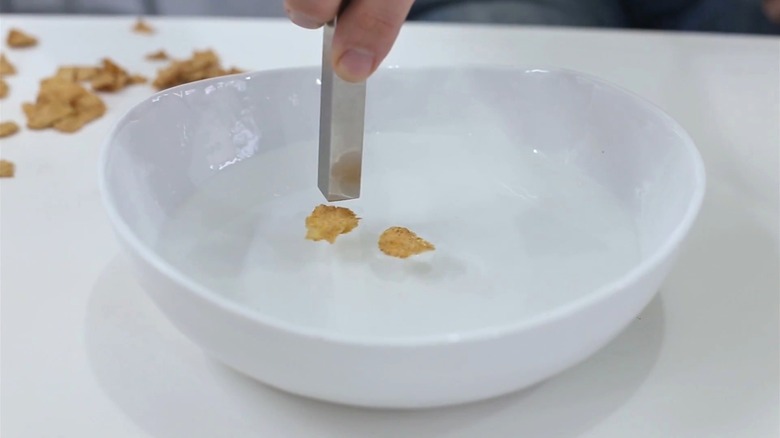The Curious Experiment That Can Test If Your Breakfast Cereal Is Magnetic
We may receive a commission on purchases made from links.
Kids love cereal, and let's be honest ... so do adults. If you look at the nutrition facts on the many boxes of cereal while you're at the store shopping, you'll see that many cereals contain at least a little bit of iron. That's not out of the ordinary, but have you ever wondered if the iron you're eating is magnetic like the iron naturally found in dirt? With an elementary science experiment using magnets, you can satiate your curiosity.
It might sound like a no-brainer, but all you need to do is hold a magnet over your cereal to find out if it's magnetic. There are, however, a couple of tricks that you can use to get accurate results with this cereal science project. The first trick is to float just a couple of cereal pieces in a bowl of water. Then, hold your magnet — one as strong as you can get and as long as you can get so that it can reach the cereal easily — over the top of one piece. Try to get as close as possible to the piece without touching it, and slowly move the magnet. The cereal should slowly follow your movement.
The second trick is to choose a cereal that has a high amount of iron in it. Surprisingly, Frosted Mini-Wheats has 18 milligrams of this mineral/metal in a serving, as does Total Whole Grain Cereal. Cereals like Cheerios, Corn Flakes, Rice Krispies, and Special K Red Berries contain about 11 to 13 milligrams. On the other hand, All-Bran, Cocoa Puffs, and Fruity Pebbles have fewer than 5 milligrams of iron per serving. Choosing a cereal with more iron in it will, obviously, be more magnetic and respond better to your movements.
The importance of iron in cereal
While there is a way to get iron out of breakfast for a science fair project using a quick and easy experiment with magnets, there's an important reason why this mineral/metal is added to cereals: Your blood can't carry oxygen molecules throughout the body without it. Despite iron being a necessary element to sustain life, the body doesn't make it on its own. It does, however, occur naturally in many foods — including fish, meat, poultry, nuts, and produce.
Some people don't get enough iron in their diets, and the fortification of cereals with iron can pick up that slack. People with iron deficiency anemia, for instance, have too little of the mineral/metal in their blood for red blood cells to produce the hemoglobin that transfers oxygen to their organs and tissues. Eating fortified grain products, alongside other iron-rich foods, can reduce the risk of this condition developing and even help treat it.
Additionally, cereal and other iron-fortified foods are a great way to prepare for and recover from donating blood. Giving blood depletes the iron stores in your blood — you're donating it, after all — usually by between 220 and 250 milligrams each time (per The American National Red Cross). It can take up to 7.5 months for the body to replenish the lost iron on its own, but eating foods high in iron (and vitamin C) can speed up this process.

